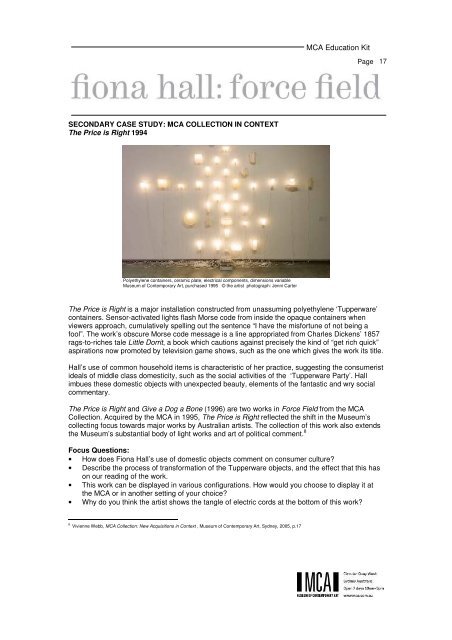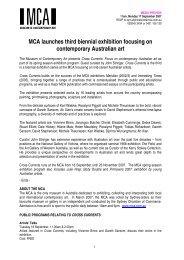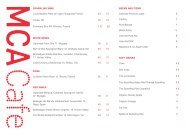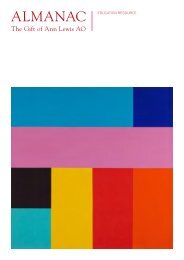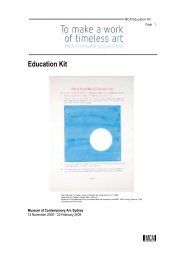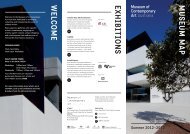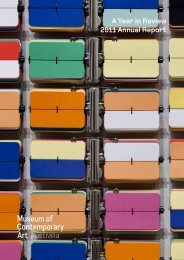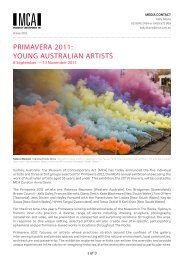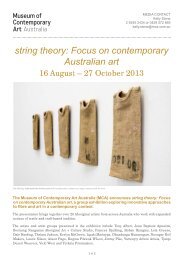Fiona Hall: Force Field Education Kit - Museum of Contemporary Art
Fiona Hall: Force Field Education Kit - Museum of Contemporary Art
Fiona Hall: Force Field Education Kit - Museum of Contemporary Art
- No tags were found...
You also want an ePaper? Increase the reach of your titles
YUMPU automatically turns print PDFs into web optimized ePapers that Google loves.
MCA <strong>Education</strong> <strong>Kit</strong>Page17SECONDARY CASE STUDY: MCA COLLECTION IN CONTEXTThe Price is Right 1994Polyethylene containers, ceramic plate, electrical components, dimensions variable<strong>Museum</strong> <strong>of</strong> <strong>Contemporary</strong> <strong>Art</strong>, purchased 1995 © the artist photograph: Jenni CarterThe Price is Right is a major installation constructed from unassuming polyethylene ‘Tupperware’containers. Sensor-activated lights flash Morse code from inside the opaque containers whenviewers approach, cumulatively spelling out the sentence “I have the misfortune <strong>of</strong> not being afool”. The work’s obscure Morse code message is a line appropriated from Charles Dickens’ 1857rags-to-riches tale Little Dorrit, a book which cautions against precisely the kind <strong>of</strong> “get rich quick”aspirations now promoted by television game shows, such as the one which gives the work its title.<strong>Hall</strong>’s use <strong>of</strong> common household items is characteristic <strong>of</strong> her practice, suggesting the consumeristideals <strong>of</strong> middle class domesticity, such as the social activities <strong>of</strong> the ‘Tupperware Party’. <strong>Hall</strong>imbues these domestic objects with unexpected beauty, elements <strong>of</strong> the fantastic and wry socialcommentary.The Price is Right and Give a Dog a Bone (1996) are two works in <strong>Force</strong> <strong>Field</strong> from the MCACollection. Acquired by the MCA in 1995, The Price is Right reflected the shift in the <strong>Museum</strong>’scollecting focus towards major works by Australian artists. The collection <strong>of</strong> this work also extendsthe <strong>Museum</strong>’s substantial body <strong>of</strong> light works and art <strong>of</strong> political comment. 8Focus Questions:• How does <strong>Fiona</strong> <strong>Hall</strong>’s use <strong>of</strong> domestic objects comment on consumer culture?• Describe the process <strong>of</strong> transformation <strong>of</strong> the Tupperware objects, and the effect that this hason our reading <strong>of</strong> the work.• This work can be displayed in various configurations. How would you choose to display it atthe MCA or in another setting <strong>of</strong> your choice?• Why do you think the artist shows the tangle <strong>of</strong> electric cords at the bottom <strong>of</strong> this work?8Vivienne Webb, MCA Collection: New Acquisitions in Context , <strong>Museum</strong> <strong>of</strong> <strong>Contemporary</strong> <strong>Art</strong>, Sydney, 2005, p.17


